Have you ever felt a tea towel? It’s a wonderful fresh feeling. If a towel can feel fresh. A tea towel is different from any other towel you know. Different from a bath towel, beach towel, dish towel, and more. So what is a tea towel? What makes a tea towel different? Is it the tea towel fabric, tea towel size, or tea towel material? So grab your nearest teacup and let’s discuss what makes a tea towel unique.
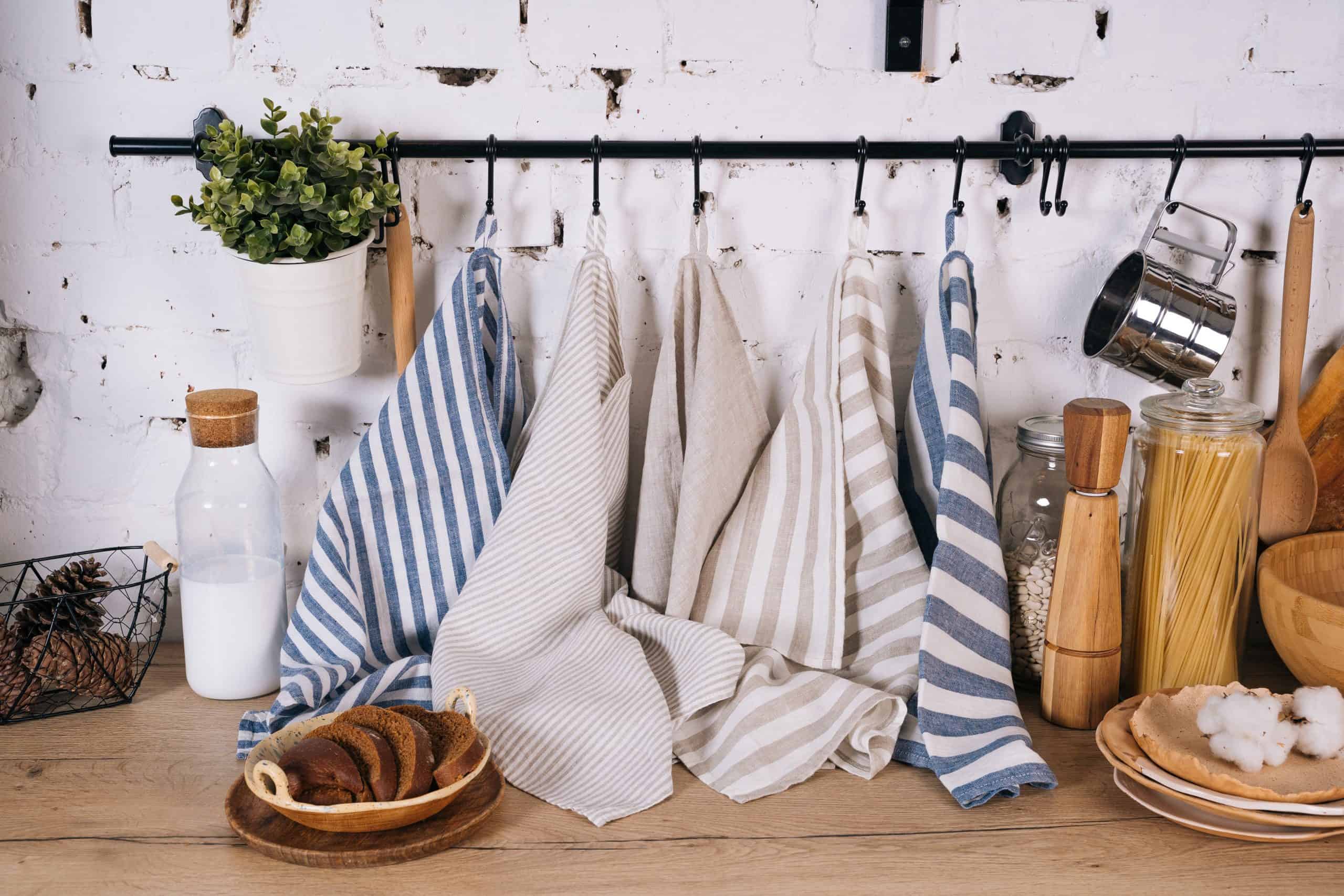
What is a tea towel?
First, we need to state that a tea towel is not a dish towel, yet a dish towel can be a tea towel. But how?
A tea towel is a cloth that’s used for drying dishes. Really Webster Dictionary? I believe a tea towel is much more than that. A tea towel is a history and a deep connection to tea.
A tea towel is often made of linen or more commonly today, cotton. A tea towel is a flat woven. It tends to be lint-free and soft. Some are plain in design and more are beautiful designs.
A tea towel was born of royalty and those in the upper class. Tell that to the dish towel.
Tea towels range from 16 x 28 to 18 x30 inches and date back to the 19th century in England. Tea towels were a status symbol and oftentimes hand embroidered and given as gifts. The tea towel was a status symbol of upper society. As the ladies gathered for tea. The tea towel was used as a display, a teapot insulator (or cozy), dessert cover, and at the end of the day a dryer of fine china. Notice that this service was performed by the lady of the house and not the servant. The reason? Fear of broken china. But don’t you think (as today)
Servants would hand create the tea towels making sure to hand stitch the seams. Tea towels were embroidered with flowers, birds, butterflies, monograms, and names. Tea towels were a treasure. A treasure that was passed down from generation to generation as keepsakes.
Most tea towels during the 18th century were solid backgrounds. Following centuries brought color, stripes, and checkered patterns.
I have many tea towels and I’m lucky enough to live by some farm stores that actually sell flour sack tea towels. These towels are the love of my kitchen. They have tea stains and soils but they are tough. When other dish towels have frayed and been moved to rags my tea towels are still up the kitchen challenge.
Tea towel history
Years ago when people made a pot of tea you’d put the tea towel over the pot to keep it warm. And then the tea towel would be used to wipe the dishes with. The tea towel does not have an extensive history but what we do know is interesting.
It was the 18th century when tea towels first came to light. It was England during the 18th century. The absorbent linen material towels were first used. The first use was to keep the tea warm inside the teapot. Insulation and warmth. After the tea party was over the tea towels served double duty with clean up. Besides, those tea towels were used to cover the biscuits or desserts to keep them warm. Also used to keep pests off in a picnic/patio setting. The most versatile towel ever!
The tea towels came to the American kitchen in the 19th century with the Industrial Revolution. The change brought cotton as the fabric of choice. Cheaper to mass-produce. The towel that once sat like royalty at the hand of the lady of the house now becomes a normal staple hanging on the kitchen stove. The tea towel now is a dish drying towel and a workhorse. The tea towel also gained a new name. The glass towel. The glass towel had the responsibility of cleaning the glassware. Cleaning glassware with little to no lint and great absorbency.
As a workhorse, the tea towel stood up to the challenge. Dish drying, counter cleaning, spill drying workhorse.
When tough times visit a household and a nation people become creative. During the Great Depression, households began converting flour sacks into tea towels. Some left them plain while others used needlework to make them fancy. Flour makers caught on and started to create their own designs on the flour sacks. Mainly advertisements and patterns. Those advertisements ended on tea towels. Tea towels that were used when serving tea to family and friends. Tea towels hung on kitchen cabinets and stoves as free advertising.
The Van Gogh tea connection
Did you know that there even was a connection? There is. Like most tea stories the facts are not always so clear. The story is so interesting we have to share it. The story goes like this.
Van Gogh is said to have used many things to paint on when he ran out of canvases. During his stay at Saint-Paul-de-Mausole mental asylum, he would paint on other items. There is a painting named “The Large Plane Trees”. That painting is said to have been painted on a tablecloth or tea towel during that time. Three small facts from that time.
A lot of great artists ended up in mental asylums, This happened due to the fact of being exposed to lead in the paint. The same paint they used to paint with.
Van Gogh had a brother who would supply the artist with his art supplies. When he did not get him the supplies he needed at that time. Van Gogh would use other objects (like tea cloths and towels) to create on
If you get a chance to see the painting “The Large Plane Trees” look closely and you will see faint red squares behind the image.
There is an actual tea towel Van Gogh painted on. It is a floral design and was put up to auction in 2000. That tea towel sold for millions of dollars.
The popularity of the tea towel may not have died. It was shrouded in fact because of this versatile multi-purpose kitchen and tea tool. Today there is a resurrection of the tea towel. The popularity comes with a rise in the popularity of tea. There is even a virtual tea museum. You need to check it out and add your tea towel to it.
Tea towel fabric
Traditional tea towels are made from linen as they don’t leave any lint. Linen has a definite feel to it, a bit thicker than cotton. Cotton became the second most popular material used. This was because of mass production and has now become the most popular fabric used. Cotton is absorbent and durable.
I’ve washed my tea towels hundreds of times. A tea towel is no different than any other towel as it will need to be cared for and cleaned. Flour sack tea towels tend to hold onto their tea stains. I may be sort of unique in how I feel about those stains. I love them, they are like war wounds. As long as I have washed and sanitized the towels I am pretty proud of the visual use of my flour sack towel.
Now, these are the plain white or off-white towels. The towels that I have that are decorated or vintage, those towels are for show and display.
Now washing these towels. You want to care for them. If they have oils in them you can soak them in soapy water. If not, just toss them in the washing machine and relax. You can easily toss them into the dryer but DO NOT use fabric softener or dryer sheets. Actually do not use dryer sheets on any towels. These products leave a film on the towels that make them less absorbent.
I felt it would interesting to explore some of the fabrics used to create tea towels:
Linen – Linen is created from the fibers of the flax plant. It is very strong and absorbent. It also dries fast. Linen is a natural fiber. Flax takes longer to grow than cotton. Flax fibers can also be difficult to work with. Linen leaves no lint and lasts for a long time. The linen also keeps its shape after being washed several times.
Unbleached Cotton (Flour Sack) – Unbleached cotton is natural cotton that has not been bleached. It’s a heavier cotton fabric that is natural. Durable and versatile. Natural colored cotton can be green, brown, red or a mocha color as well as a naturally neutral color.
Cotton Twill – This is a popular weaved cotton. Cotton twill comes in a variety of colors and is a popular fabric for sheets, bedding, and towels. A softer material that is good for everyday use. Cotton twill has a higher thread count.
Is there a difference between a dish towel and a tea towel?
While the distinction between the two towels is ever so slight. There are some slight differences that we can acknowledge here. If you are using a dish towel as a tea towel or vice versa I’d not be too upset. They are both used as each other at some point in the history of the tea towel.
Tea towels have been called dish towels for as long as they have been in existence. The differences make a tea towel exactly that a tea towel. The differences are:
Size – tea towels are larger than a kitchen towel and smaller than a bath towel
Material – tea towels are made of linen or cotton. Kitchen towels are terry cloth or a variety of materials present day.
Textures – tea towels are thin, flat, and tightly woven. Sometimes designed and decorated. Dish towels are generally textured and designed.
What can I do with my tea towels?
Pillowcase – I mean why not? Lay two tea towels facing each other and sew the edges. You can stuff your tea towel pillow or use it as a cover for another pillow. Both cotton and linen are comfortable to lay on.
Bread bundle – You can use your towel to present a loaf of bread or to wrap a loaf of bread as a gift. Wrap the bread in the tea towel and use some ribbon or cord to secure it. Not only do they receive the bread but they are getting a lovely tea towel as well.
Candleholder – Again, another great gift giving idea. Wrap a lovely candle in a tea towel, secure with ribbon.
Gift wrapping – Great idea for bridal or baby showers to use a tea towel or two to wrap up your presents.
Placemat and napkin – Use a set of tea towels to complete your table setting. By using the towels as placemats. Wrapping up the tea towel with a napkin ring and presenting it as a very soft and absorbent napkin.
Use as a hot pad – Simply done. Fold your tea towel and place hot items on top.
Line a drawer – I’ve not seen this done but it is a good idea. You may have to fasten it down a bit so it will not bunch up or more.
Strainer – A perfect strainer for separating food from liquids. Also a great idea in a survival back to strain out water to get the debris out.
To make cheese – use a tea towel to separate the curds and the whey.
Needlework (cross-stitch, needlepoint) – As in days of old. Use a tea towel to create your own masterpiece. Start a new family tradition of giving tea towels as gifts.
Sew together to use as an appliance cover– Similar to the pillowcase. Have you seen the price of appliance covers? Sewing a couple of tea towels together gives you a brilliant appliance cover. As well as being easy on the budget.
Dry herbs on – I do use my tea towels for this. I wash my herbs off from the garden and lay on a couple layers of tea towels to dry off before hanging the herbs up to dry.
Cover bread dough to rise – Another great use is to use the tea towels to cover up the bread that needs to rise prior to banking. A tea towel is perfect because it produces little or no lint.
And lastly:
Hang your tea towel up to display – I remember my grandmother used to have these little dowel rods that she wrapped the top and bottom of her tea towels in. Most of the towels she had on display were ones with a design and a calendar for the current year.
Tea Towel Masks – Enter the 21st century. You can take your tea towel and use it for a safety response to the COVID 19 break-out. If you are not sure how it’s simple. Here is a simple tutorial showing you how to create it.
How to create your own personal collection of tea towels
Want to create your own tea towels? It’s simple to do. Head to your local fabric store and pick out some designed or plain cotton or linen fabric. Stay away from man-made fabrics like polyester or stretch fabrics. The fun part of making your own is you can create any size you like.
The standard size of a tea towel is 18″ x 28″. One yard of fabric will do. If you can sew just one.
- Cut the size of fabric you would like
- Leave room for your edges to be sewn
- You will sew a ¼ to ⅜ inch hem. The smaller the better. Make sure the fabric lays flat with the hem you choose.
- Sew along the edges either by hand or machine
- Keep your edges small
Summary
The feel of the linen. You can feel the difference between a true tea towel. I love my flour sack tea towels, they are just plain and off-white. They have some stains on them but that gives them their character. I’m fortunate to live in a rural community with farm stores that carry authentic flour sack tea towels. If you don’t have a farm store I know where you can get your own tea towels to use or to embroider on. The most beautiful towels ever, with an interesting history.

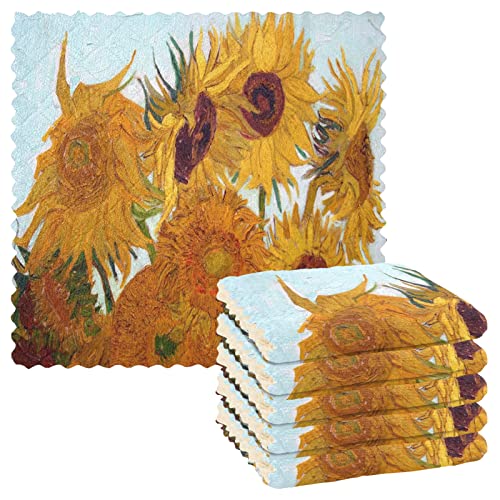
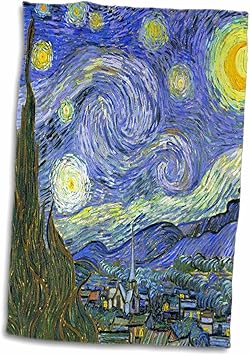
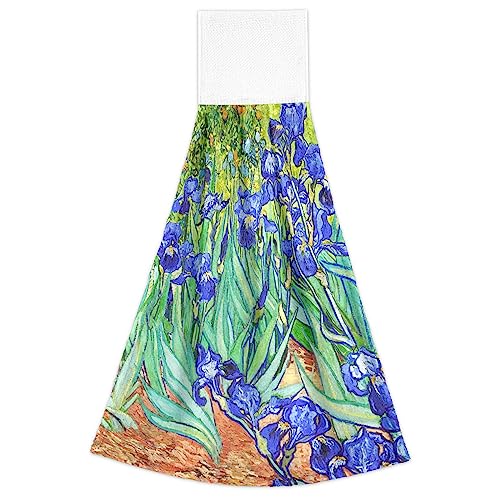
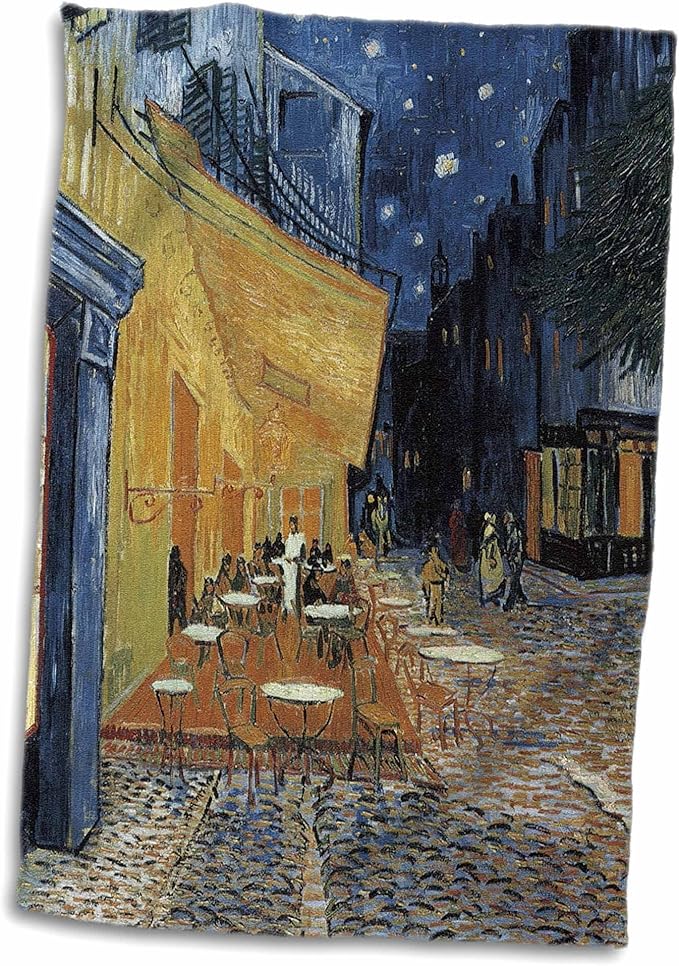

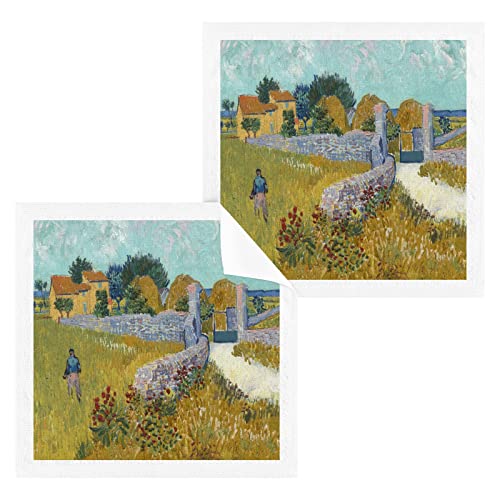


2 thoughts on “The History Of The Tea Towel And How To Make Your Own like Van Gogh”
Hi Lisa, thank you for this interesting article. I am doing research on tea towels and their history, for my master thesis as a textile designer. Would you be up for a talk? It would be lovely to share some information.
Many greetings and hoping to hear back from you,
Vera
Hi Vera, Sorry for the late reply, life has been living lately! 🙂
I’d love to chat with you about it. Let me know what you are thinking and you can always reach me on FB @ MyTeaVault or my Email: MyTeavault@gmail.com